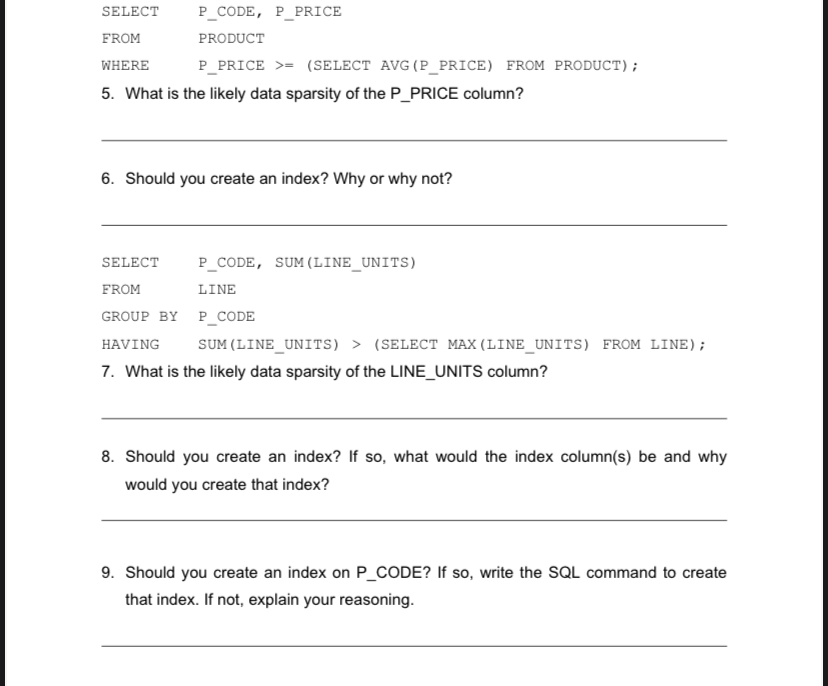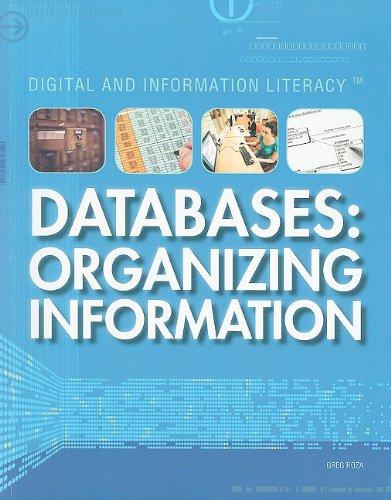Answered step by step
Verified Expert Solution
Question
1 Approved Answer
SELECT , P _ CODE, P _ PRICE FROM PRODUCT WHERE P _ PRICE > = ( SELECT AVG ( P _ PRICE ) FROM
SELECT PCODE, PPRICE
FROM PRODUCT
WHERE PPRICE SELECT AVG PPRICE FROM PRODUCT ;
What is the likely data sparsity of the PPRICE column?
Should you create an index? Why or why not?
SELECT PCODE, SUMLINEUNITS
FROM LINE
GROUP BY PCODE
HAVING SUMLINEUNITSSELECT MAX LINEUNITS FROM LINE;
What is the likely data sparsity of the LINEUNITS column?
Should you create an index? If so what would the index columns be and why
would you create that index?
Should you create an index on CODE? If so write the SQL command to create
that index. If not, explain your reasoning.

Step by Step Solution
There are 3 Steps involved in it
Step: 1

Get Instant Access to Expert-Tailored Solutions
See step-by-step solutions with expert insights and AI powered tools for academic success
Step: 2

Step: 3

Ace Your Homework with AI
Get the answers you need in no time with our AI-driven, step-by-step assistance
Get Started


